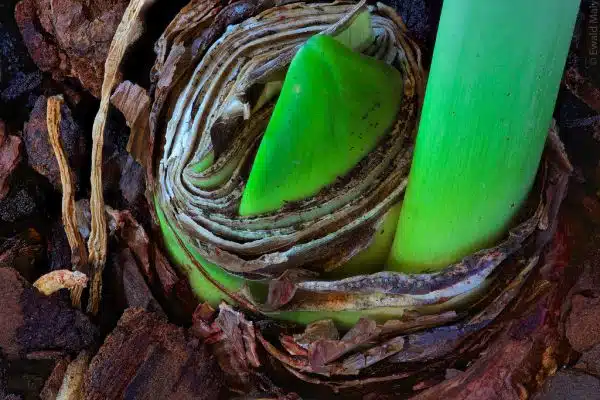Amaryllis bulbs are a popular choice for indoor and outdoor container gardening. These beautiful flowering plants are easy to care for and can provide stunning blooms year after year. However, proper storage of amaryllis bulbs is crucial to ensure their health and longevity.
As horticulturalists, we understand the importance of preserving the vitality of plant life. In this article, we will delve into the best practices for storing amaryllis bulbs during their dormant period. Whether you have a single bulb or an entire collection, our tips will help you keep your amaryllis bulbs healthy and ready to bloom when the time comes. So let’s get started on how to store amaryllis bulbs effectively!
Understanding Amaryllis Bulbs
As the winter months approach, it’s time to start thinking about planting amaryllis bulbs. These stunning flowers are native to South Africa and are known for their vibrant colors and large blooms. Amaryllis bulbs should be planted in a well-draining soil mix, with the top third of the bulb exposed above the soil line. Planting instructions should be followed carefully to ensure success.
Amaryllis care is relatively easy, making them a popular choice for both experienced and novice gardeners alike. Once planted, keep the soil moist but not waterlogged, as too much moisture can cause root rot. Amaryllis bulbs prefer bright indirect light and warm temperatures between 60-75°F. Fertilize regularly with a balanced fertilizer during the growing season.
Knowing when to store your bulbs is an important part of amaryllis care. After blooming has ceased, allow the foliage to die back naturally before cutting it down to 1-2 inches above the bulb. At this point, you can either leave your bulb in its pot or remove it from the soil and store it in a cool dry place until next year’s planting season. With proper care, amaryllis bulbs can provide years of beautiful blooms for your home or garden.
Knowing When To Store Your Bulbs
Determining when to store your amaryllis bulbs is crucial in ensuring they remain healthy and produce beautiful blooms. One way to determine bulb maturity is by observing the leaves. When the leaves begin to yellow and die back, this is a sign that the bulb has reached maturity and is ready for storage. Another way is to wait until after the flowers have bloomed and then allow the stem to wither before removing it from the bulb.
Identifying signs of dormancy is also important in determining when to store your bulbs. Dormancy occurs when the plant enters a period of rest, usually during the winter months. Signs of dormancy include leaves that have fallen off or turned brown, as well as a lack of growth or activity from the bulb. Once these signs are observed, it’s time to prepare your bulbs for storage.
To ensure successful storage and future blooms, it’s important to properly prepare your amaryllis bulbs before storing them. This includes removing any excess soil from the roots, trimming any damaged or dead foliage, and allowing the bulb to dry completely before storing. It’s also important to choose an appropriate location for storage, such as a cool and dark area with good air circulation.
Now that you know how to determine when your amaryllis bulbs are ready for storage and how to identify signs of dormancy, it’s time to start preparing them for their rest period. By following these simple steps, you can ensure that come next growing season, your amaryllis plants will once again produce stunning blooms for you and others to enjoy.
Preparing Your Bulbs For Storage
Knowing the right time to store your amaryllis bulbs is crucial in ensuring that they remain healthy and ready for the next growing season. Once the leaves have died back, it’s a good indication that the bulbs are ready for storage. However, it’s important to wait until the foliage has completely withered before attempting to remove them. This allows the plant to draw nutrients from the leaves, which will be stored in its bulb for future use.
When it comes to preparing your amaryllis bulbs for storage, there are a few best practices you should follow. First off, make sure you clean any excess soil or debris from each bulb using a soft brush or cloth. This helps prevent any unwanted pests or diseases from spreading throughout your collection during storage. Additionally, inspect each bulb carefully for signs of damage or rotting before storing them away.
Common pitfalls that people often encounter when storing their amaryllis bulbs include forgetting about them altogether or storing them improperly. Be sure to store your bulbs in a cool and dry location such as a basement, garage or closet where temperatures remain constant and humidity levels are low. Avoid exposing your bulbs to direct sunlight or moisture as this can lead to mold and rot.
In order to ensure that your amaryllis bulbs remain healthy and viable for future use, cleaning them properly is essential. In the next section, we’ll discuss how to clean your bulbs effectively so that they’re ready for planting when spring rolls around again.
Cleaning Your Bulbs
Proper cleaning techniques are essential to ensure that your amaryllis bulbs remain healthy and free of any diseases or pests. Before storing the bulbs, it is crucial to remove all traces of soil, debris, and dead foliage. Cleaning the bulbs also allows for better air circulation during storage, which prevents rotting.
One common mistake novice gardeners make when cleaning their amaryllis bulbs is not removing all of the old foliage. Failure to do so can lead to various fungal diseases that can harm the bulb during storage. Additionally, using water that is too hot or cold can also damage the bulb’s delicate tissues. Therefore, it is crucial to use lukewarm water and a soft brush to gently clean the bulb’s surface.
Another mistake many people make is not disinfecting their tools before cleaning the bulbs. Disinfecting your tools with a solution of one-part bleach and nine parts water will prevent cross-contamination between bulbs and reduce the likelihood of spreading disease. It is also advisable to wear gloves when handling your bulbs as they can be sensitive to oils and other substances on your skin.
Transition:
Now that you have learned how to properly clean your amaryllis bulbs let us move on to the next step: drying them.
Drying Your Bulbs
Did you know that improper drying of amaryllis bulbs can lead to mold and rot, rendering them useless for future planting? That’s why it’s important to not only store the bulbs correctly but also dry them properly. Different drying methods exist, but air-drying is the most common and effective method for amaryllis bulbs.
To air-dry your bulbs, first remove any excess soil and trim off any remaining foliage. Place the bulbs in a cool, dry place with good air circulation, such as a garage or basement. It’s essential to avoid exposing them to direct sunlight or high temperatures, which can cause dehydration and damage to the bulb. Optimal drying time is typically two weeks, during which time you should inspect your bulbs regularly for signs of mold or rot.
To prevent mold and rot during the drying process, ensure that your storage area remains clean and dry. Avoid placing bulbs on damp surfaces or near sources of moisture. Additionally, consider using a fungicide treatment before storing your bulbs to protect against fungal growth. Once fully dried, you can proceed with labeling your bulbs for storage until next planting season.
As you prepare to label your bulbs for storage, keep in mind that proper labeling is critical for future success. Label each bulb with its variety name and date of harvest so that you can track its age accurately. This information will help you determine when it’s time to replant your amaryllis bulbs in the future without confusion or uncertainty.
Labeling Your Bulbs
Creating labels for your amaryllis bulbs is an essential step in the bulb storage process. Labels help you keep track of the different types of bulbs, their planting dates, and other important information that will be useful when replanting them. When creating labels, it is recommended to use weather-resistant materials such as plastic or metal tags. These materials can withstand moisture and other environmental factors that might otherwise damage paper or cardboard labels.
The importance of labeling bulbs cannot be overstated. Without proper labeling, it can be challenging to remember which bulbs are which, especially if you have different varieties of amaryllis bulbs. Additionally, misplacing a bulb during the storage process can lead to confusion and frustration when it comes time to plant them again. By labeling your bulbs correctly, you can avoid mixing up bulbs and ensure that each one gets planted in its proper location.
To create labels for your amaryllis bulbs, start by writing down the necessary information such as the variety name, date planted (if known), and any other relevant details. Then attach the label to the bulb using a twist tie or string. Alternatively, you can attach the label directly to the container where you store your bulbs. By taking this simple step now, you’ll save yourself time and hassle later on when it’s time to replant your amaryllis.
Now that you have created labels for your amaryllis bulbs, it’s time to choose the right storage location for them. This is an equally important step in ensuring that your bulbs remain healthy during their dormant period. In the next section, we’ll discuss some key factors to consider when selecting a suitable location for storing your amaryllis bulbs.
Choosing The Right Storage Location
Proper storage is crucial to ensure that amaryllis bulbs remain viable for replanting. When selecting a storage location, temperature control and moisture management are two of the most important factors to consider. The ideal temperature range for storing amaryllis bulbs is between 40°F and 50°F. This means that storing them in a cool, dry place such as a basement or garage is preferable to storing them in a warm, humid environment.
Moisture management is equally important when it comes to storing amaryllis bulbs. Moisture can cause the bulbs to rot or develop mold, which can render them unusable. Therefore, it’s essential to store them in a dry environment with good air circulation. Avoid storing them in plastic bags or containers as these can trap moisture and promote fungal growth. Instead, use paper bags or cardboard boxes that allow for air circulation.
By taking care to choose the right storage location and managing temperature and moisture levels appropriately, you can ensure that your amaryllis bulbs remain viable until you’re ready to replant them. In the next section, we’ll discuss how to select the proper storage container for your bulbs so that they stay protected during storage while still allowing air flow and preventing moisture buildup.
Selecting The Proper Storage Container
Choosing the right container for storing amaryllis bulbs is essential to ensure their longevity. Container options include plastic, paper, and mesh bags. Plastic containers are ideal because they retain moisture and keep the bulbs from drying out. Paper or mesh bags are also suitable but require extra care to maintain appropriate humidity levels.
When selecting a container, it’s important to consider its size. The container should be large enough to accommodate the bulbs without crowding them, as this can lead to damage or rotting. Additionally, make sure that the container has adequate drainage holes to prevent any excess moisture buildup.
Proper maintenance of the storage container is crucial for preserving amaryllis bulbs during the dormant period. This involves checking on the bulbs periodically to ensure that they are not drying out or becoming too moist. It’s also important to store the container in a cool, dry location away from direct sunlight and extreme temperatures.
Three recommended items for selecting and maintaining an amaryllis bulb storage container:
- Purchase a plastic storage container with sufficient drainage holes.
- Check on your bulbs frequently to ensure proper moisture levels.
- Store your container in a cool, dark place away from extreme temperatures or sunlight.
With these tips in mind, you’ll be able to choose an appropriate storage container for your amaryllis bulbs and keep them healthy until planting season arrives! In the following section, we will discuss using the correct storage medium for amaryllis bulbs after selecting an appropriate storage container.
Using The Correct Storage Medium
After selecting the proper storage container for your amaryllis bulbs, it’s essential to use the correct storage medium. The most common mediums used are peat moss, vermiculite, and perlite. These mediums help maintain moisture control while also regulating temperature fluctuations within the container. Peat moss is an excellent choice as it is highly absorbent and provides ample moisture retention. Vermiculite and perlite are both lightweight and porous mediums that allow for optimal airflow and drainage.
When storing amaryllis bulbs, it’s important to ensure that they remain in a cool, dry location. A temperature range of 40 to 50 degrees Fahrenheit is ideal for storage. This temperature range helps prevent any premature growth or rotting of the bulbs before planting season begins. Moisture control is also essential during storage, as excess moisture can lead to mold growth or bulb rot.
To monitor your stored amaryllis bulbs, it’s recommended to check them periodically throughout the winter months. Check for any signs of mold or rotting and remove any affected bulbs immediately to prevent further spread. Additionally, ensure that the bulbs remain firm and have not begun to dry out excessively. Proper bulb storage is crucial for successful blooms come springtime, so taking care during this stage will pay off in the long run.
Checking Your Bulbs Periodically
As a responsible gardener, it is important to check the condition of your amaryllis bulbs regularly. Checking frequency depends on the storage conditions and the age of the bulb. However, as a general rule, it is recommended to check the bulbs at least once every two weeks. This will help you detect any signs of damage or disease early on and take necessary actions.
One of the key factors that determine bulb condition is moisture content. Therefore, checking for moisture levels is crucial. The bulb should not be too dry or too wet. Excessive moisture can cause rotting while insufficient moisture can lead to shriveled bulbs. A good way to check for moisture levels is by squeezing the bulb gently with your fingers. If it feels firm but slightly pliable, then it has optimal moisture levels.
Another aspect to consider when checking your bulbs is their physical appearance. Any signs of mold or fungus indicate that there may be a problem with humidity levels in the storage area. Additionally, if you notice any spots or discoloration on the bulb’s surface, this could be an indication of fungal infection or insect infestation. In such cases, immediate action should be taken to prevent further damage.
Now that you know how to check your amaryllis bulbs’ condition regularly, it’s time to move onto replanting them when they’re ready!
Replanting Your Bulbs
After checking your bulbs periodically, it is important to replant them in the right soil. Amaryllis bulbs require well-draining soil that is rich in organic matter. The pH level of the soil should be between 6 and 7. A good mix for amaryllis bulbs is equal parts of peat moss, perlite, and coarse sand.
When replanting your bulbs, choose a pot that allows at least two inches of space around each bulb. Fill the bottom of the pot with soil mix and place the bulb on top with its roots spread out. Cover the bulb with more soil mix until only a third of it is exposed above ground level.
Here are some replanting tips to keep in mind: water your bulbs sparingly after replanting to avoid rotting; place them in a sunny area but not directly under sunlight; and don’t fertilize them until new growth appears. Following these tips will help ensure that your amaryllis bulbs grow healthy and strong. In the next section, we will discuss propagating your bulbs for even more blooms.
Propagating Your Bulbs
It may be tempting to simply purchase new amaryllis bulbs each year, but propagating your own bulbs can be a rewarding experience. With the right propagation techniques, you can increase the number of bulbs in your collection and have a greater sense of ownership over your plants. Additionally, propagating amaryllis bulbs allows you to share them with friends and family, spreading the joy of growing beautiful flowers.
To begin propagating your amaryllis bulbs, start by selecting healthy plants with robust bulbs. Once you have identified these plants, gently remove the bulb from the soil and separate any offsets that have formed around the base of the parent bulb. These offsets can be planted immediately or stored for future use. Before planting the offsets, make sure they are dry and clean to prevent rot or disease.
Once your new bulbs are planted, it is important to maintain their health to ensure successful growth. Regular watering, fertilization, and pruning will all contribute to strong and healthy plants. As with any plant care regimen, it is important to monitor your bulbs for signs of stress or disease so that you can address any issues promptly. By following these bulb maintenance tips, you can enjoy a beautiful display of amaryllis blooms year after year.
As a gardener, it is important to remember that mistakes happen and not every propagation attempt will be successful. However, there are common mistakes that can be avoided when attempting to propagate amaryllis bulbs. One mistake is planting bulbs too deep in the soil which can cause them to rot before they have a chance to sprout. Another mistake is overwatering which can lead to root rot or fungal diseases. By being mindful of these common mistakes and taking steps to avoid them, you can increase your chances of successfully propagating healthy amaryllis bulbs for years to come.
Common Mistakes To Avoid
Avoiding damage to amaryllis bulbs during storage is crucial for the plants’ future growth and flowering. Proper handling of the bulbs is necessary to ensure they remain healthy and viable. One common mistake that many people make when storing amaryllis bulbs is leaving them in a cold, damp location. This can cause the bulbs to rot, which will prevent them from growing and eventually lead to their demise.
To avoid this problem, it’s important to store your amaryllis bulbs in a cool, dry place with good air circulation. This will help prevent moisture buildup around the bulbs, which can lead to rotting. Additionally, be sure to remove any excess soil or debris from the bulbs before storing them. This will help prevent mold and mildew growth, which can also lead to bulb rot.
Proper handling of your amaryllis bulbs during storage is essential for ensuring their future success. By avoiding damage and taking steps to promote bulb health, you can set yourself up for beautiful blooms come springtime. In the next section, we’ll discuss some common troubleshooting storage issues that may arise despite your best efforts at proper handling and storage techniques.
Troubleshooting Storage Issues
To prevent rot, it is important to check the condition of the amaryllis bulbs regularly and discard any that are soft, squishy, or discolored. Fungal spots may appear on the bulbs and can be identified by their texture and color, with white or gray patches being the most common. High humidity is necessary for successful storage of amaryllis bulbs, and can be maintained with occasional misting. Temperature should be monitored, as temperatures that are too cold or too hot can cause damage to the bulbs. To best control insects, it is recommended to inspect the bulbs carefully and remove any that are infested.
Checking For Rot
As a plant expert, it’s important to know how to properly store amaryllis bulbs. One of the most common issues that can arise during storage is rot, which can quickly spread and ruin your bulbs. Identifying signs of rot early on is crucial to preventing it from spreading and potentially destroying all of your stored bulbs.
To identify signs of rot, carefully inspect each bulb for any soft or mushy spots. These areas may be discolored or have a foul odor. If you notice any signs of rot, remove the affected bulb immediately and discard it. It’s also important to prevent rot from occurring in the first place by storing bulbs in a cool, dry location with good ventilation.
Preventing rot can also involve proper handling techniques during storage. Make sure to handle bulbs gently and avoid damaging them during handling or transportation. Additionally, be sure to store bulbs away from any materials that may trap moisture, such as plastic bags or containers without ventilation holes. By taking these precautions and carefully monitoring your stored amaryllis bulbs for signs of rot, you’ll ensure they stay healthy and ready for planting when the time comes.
Identifying Fungal Spots
As a plant expert, it’s crucial to properly store amaryllis bulbs to ensure their health and readiness for planting. One of the common issues that gardeners may encounter during storage is fungal growth. Identifying and treating these fungal spots early on can prevent them from spreading and damaging all stored bulbs.
Preventing fungal growth begins with proper storage conditions. It’s essential to keep the environment cool, dry, and well-ventilated to hinder the development of fungi. Additionally, it’s important to handle bulbs gently during storage or transportation to avoid damage that may lead to fungal infection.
If you notice any signs of fungal spots such as discoloration or small brown/black spots on your bulbs, treat them immediately. Remove the affected bulb and discard it separately from healthy ones. You may use fungicides as a treatment option or opt for natural remedies like cinnamon powder or hydrogen peroxide solution. These remedies have antifungal properties that effectively eliminate fungus without harming the bulb’s health. By following these tips, you can ensure your amaryllis bulbs are free from fungal spots and ready for planting when the time comes.
Enjoying Your Blooming Amaryllis Bulbs
Like a burst of fireworks, blooming amaryllis bulbs can light up any space with their vibrant colors and luscious petals. However, once the blooms start to fade, it’s important to know how to prolong their beauty so you can enjoy them for as long as possible. Here are some tips to keep your amaryllis bulbs blooming for weeks on end.
Firstly, make sure your plant is getting enough sunlight and water. Amaryllis bulbs thrive in bright light, so place them near a window that receives plenty of sunshine. Keep the soil moist but not too wet; over-watering can lead to root rot and under-watering can cause the leaves to wilt. Additionally, feeding your plant with a balanced fertilizer every few weeks can help it stay healthy and strong.
Once your amaryllis bulbs have reached full bloom, it’s time to get creative with how you display them. Consider cutting off the stem and placing the flowers in a vase or arranging them in a centerpiece. You could also use the bulbs themselves as decorative pieces by placing them in a bowl or basket. Whatever method you choose, be sure to show off your stunning blooms for all to see.
| Tips for Prolonging Blooming Time | Creative Ways to Display Your Amaryllis Blooms |
|---|---|
| Keep Plant Near Bright Light | Place Flowers In A Vase |
| Avoid Over-Watering Or Under-Watering | Arrange Flowers In A Centerpiece |
| Feed With Balanced Fertilizer Every Few Weeks | Use Bulbs As Decorative Pieces |
In summary, enjoying blooming amaryllis bulbs involves providing them with adequate light and water while also getting creative with how you display their colorful blooms. Follow these simple tips and experiment with different ways of showcasing your flowers to brighten up any room in your home or office.
Conclusion
As horticulturalists, it is crucial to know how to store amaryllis bulbs properly. The process of storing these bulbs requires attention and care to ensure that they remain healthy and ready for the next growing season. By understanding the nature of amaryllis bulbs, knowing when to store them, preparing them for storage, propagating them, avoiding common mistakes, and troubleshooting any issues that may arise during storage, one can enjoy their blooming amaryllis bulbs year after year.
Remember to clean your bulbs thoroughly before storing them in a cool and dry place. Also, propagate your bulblets if you wish to increase your collection or share with friends. By following these steps diligently and avoiding common mistakes such as exposing them to moisture or overwatering during storage, you can rest assured that your amaryllis bulbs will bloom beautifully once again.
In conclusion, storing amaryllis bulbs can be a fun and rewarding experience for plant enthusiasts. With proper care and attention, one can easily store these bulbs until their next growing season. So go ahead and give it a try; you’ll be delighted with the results! After all, as the famous botanist Carl Linnaeus said: “If you don’t know the name of a plant, start naming it after someone who does.” ‘And eventually, you’ll learn its true identity.’
Image Credits
- “Sprouting Amaryllis bulb” by Alzheimer1 (featured)





























